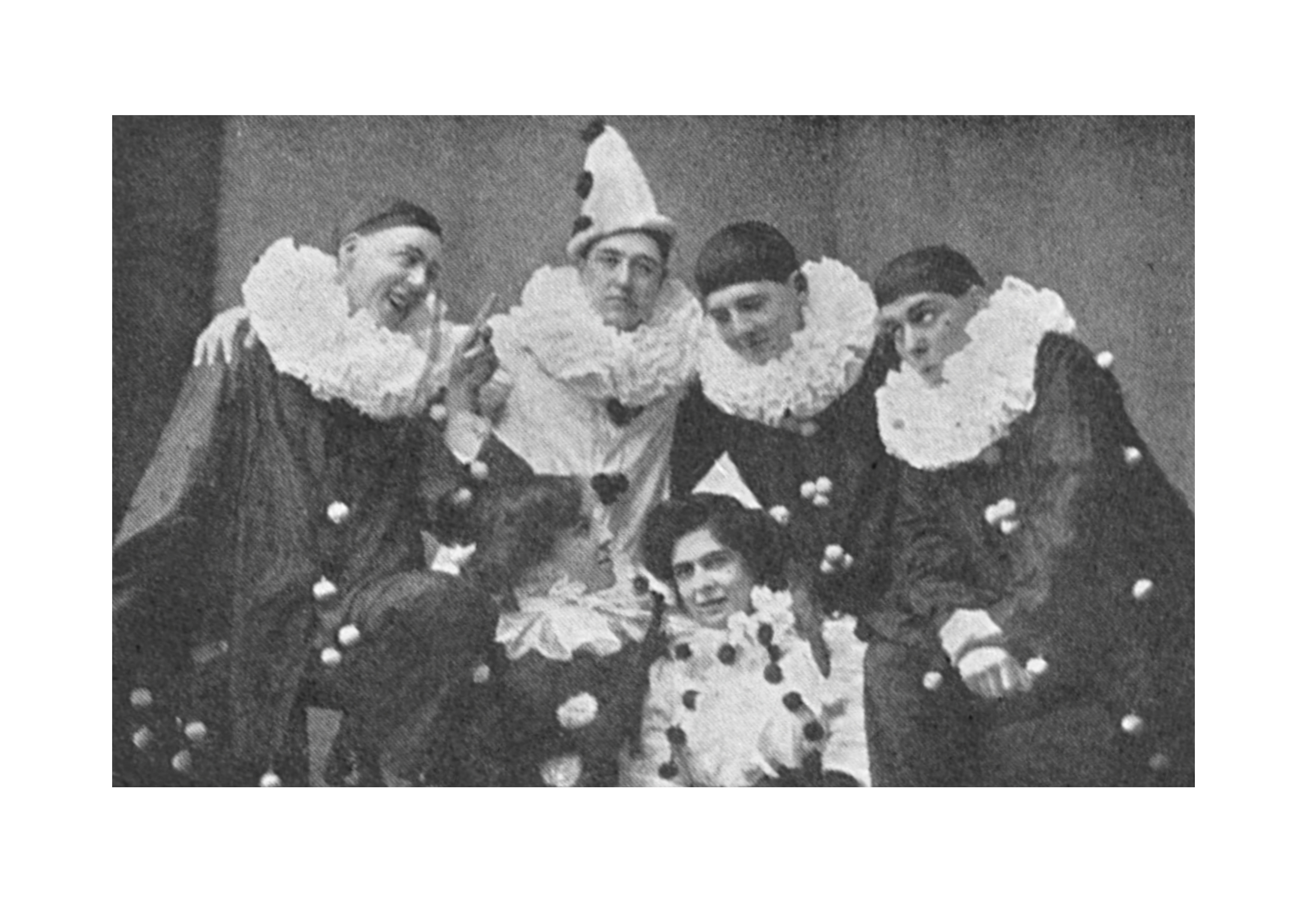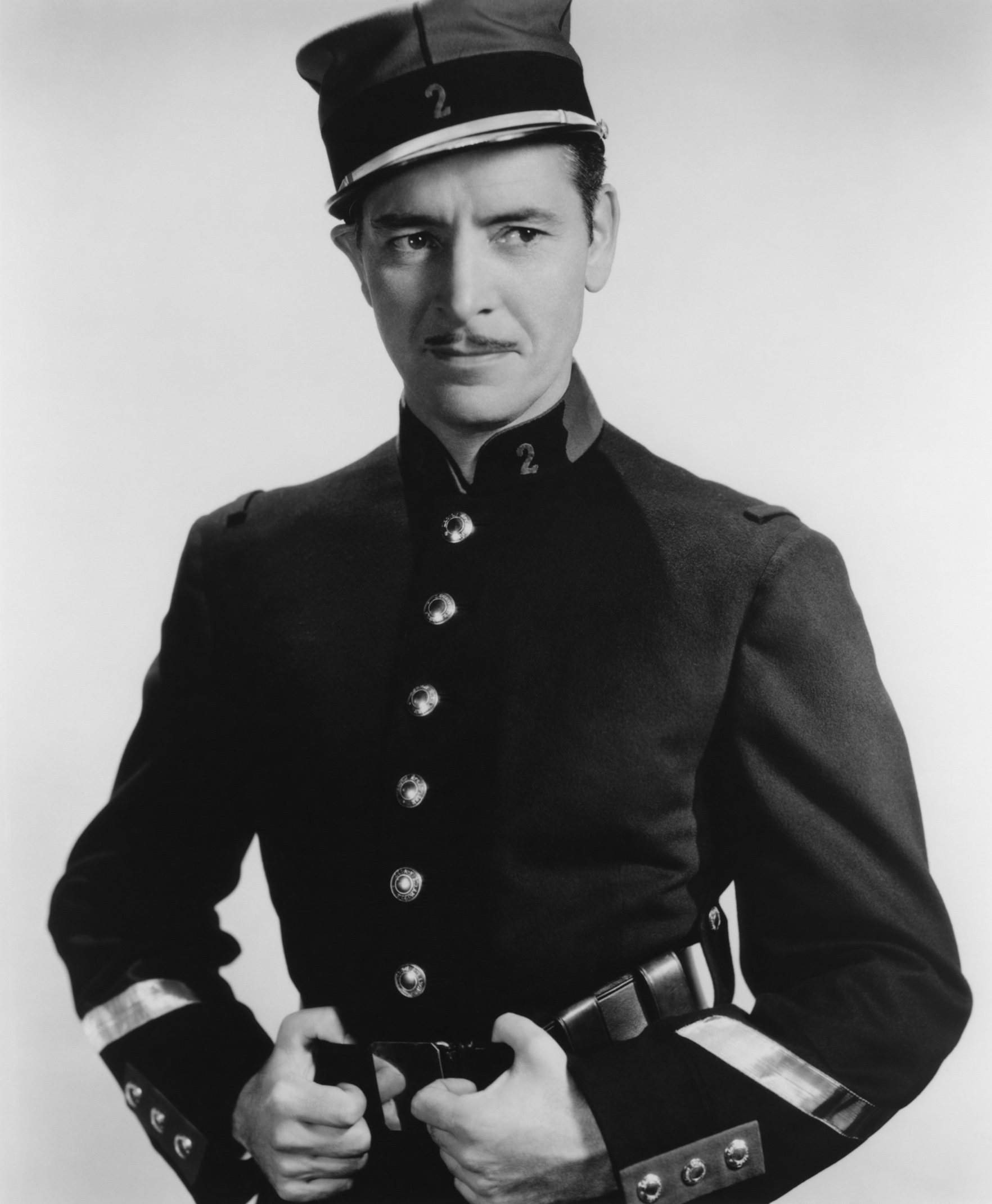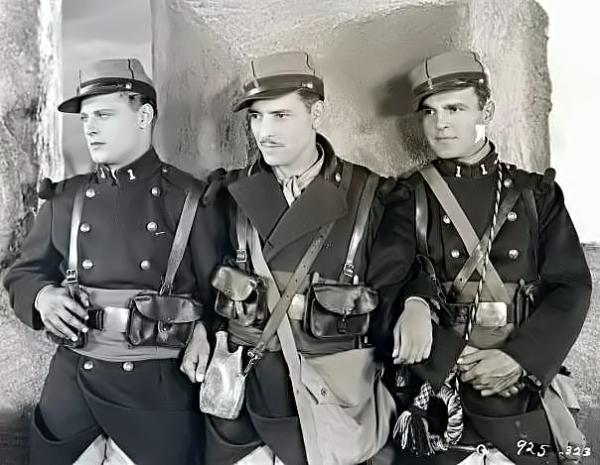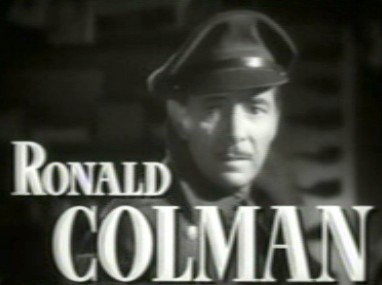1. Early Life
Ronald Charles Colman's early years were shaped by his family background and a significant financial setback that altered his educational path. His youth also saw him begin to explore his interest in acting, despite an initial shyness.
1.1. Childhood and Education
Ronald Charles Colman was born on 9 February 1891, in Richmond, Surrey, England. He was the third surviving son and fifth child of Charles Colman, a silk merchant and mantle manufacturer, and his wife, Marjory Read Fraser. His elder brother had died in infancy in 1882, leaving him with four surviving siblings: Gladys, Edith, Eric, and Freda. He was also a cousin of the Labour politician Grace Colman.
Colman attended Wyke Manor in Littlehampton, where he discovered a strong enjoyment for acting, despite his natural shyness. He later continued his education at Rolandseck School in Ealing, under the German-born headmaster Ernst Felix Marx.
1.2. Youth and Early Career
Colman had originally intended to pursue studies in engineering at Cambridge University. However, his father's sudden death from pneumonia in 1907 made attending Cambridge financially impossible. Consequently, Colman began working as a clerk for Watts, Watts & Co., Ltd., a company that managed the Britain Steamship Company, located in the City of London. It was during this period that he also began to engage with the performing arts more seriously, setting the stage for his future career.
2. World War I Service
Ronald Colman's military service during World War I was a significant period in his life, leading to an injury that would affect him for the remainder of his career.
In 1909, while still working as a clerk, Colman joined the London Scottish Regiment for a four-year term. When World War I broke out, he immediately left his job and rejoined his regiment. He served as Private No. 2148 with the 1/14th (County of London) Battalion of the London Regiment (London Scottish). On 15 September 1914, his battalion embarked from Southampton on the SS Winifred, arriving in Le Havre the following day.
Six weeks later, the London Scottish Regiment was dispatched to Ypres to provide reinforcements for the front lines. At Ypres, Colman experienced a particularly harrowing incident when he was "buried alive by the explosion of a shell" but was fortunately dug out unharmed. Later that same day, his battalion moved to Wytschaete, where they engaged in the Battle of Messines on 31 October 1914.
During the Battle of Messines, Colman sustained a serious injury to his ankle. This wound resulted in a permanent limp, which he consciously sought to conceal throughout his acting career. Medical records from the time noted: "Disability. Fracture of Ankle (Rt.) In action near Ypres 31-10-14. Man states that when advancing a shell burst near him, and he was thrown heavily injuring his right foot either by the fall or his foot being struck. There is considerable thickening of Rt. ankle. There is also some tenderness and after walking any distance there is pain and lameness."
He received initial treatment at a field ambulance unit before being transferred to England the next day. Colman was admitted to St. Bartholomew's Hospital in London, where he stayed from 6 to 11 November 1914. After his recovery, he was transferred to the 3/14 battalion of the London Scottish and sent to Perth, where he performed light clerical duties. On 6 May 1915, he was officially discharged from service, declared "No longer fit physically for war service." His military character was assessed as "Very good. Honest, sober and trustworthy."
For his service, Colman was awarded a pension, the Victory Medal, the British War Medal, the 1914 Star with clasps and roses, and the Silver War Badge. In 1928, he was made an honorary life member of the London Scottish. Notably, several other prominent Hollywood actors also served with the London Scottish during the war, including Claude Rains, Herbert Marshall, Cedric Hardwicke, and Basil Rathbone.
3. Acting Career
Ronald Colman's acting career spanned multiple decades and media, from the London stage to silent and sound films, and later to radio and television. He established himself as a versatile performer with a distinctive charm.
3.1. Early Stage Career
Around the same time he joined the London Scottish Regiment, Colman began his theatrical pursuits, quickly becoming an active member of the performing community in Ealing. Between 1909 and 1914, he performed both solo and with various concert parties and amateur dramatics groups. He started with banjo solos at benefit concerts, making his first recorded appearance at the age of seventeen in a masonic smoker for the Chiswick Soup kitchen.
Two years later, he joined the short-lived Pierrot troupes, The Tangerines, known for their attractive black and orange costumes, and The Summer 'Uns, which had only one performance. In 1912, while on the Isle of Wight, Colman and some friends formed The Mad Medicos, a troupe that performed under his direction. A segment of this group later became The Popinjays, also initially directed by Colman before George Denby took over.

Colman's repertoire included banjo solos and duets, songs and duets like "Two Little Sausages" by Lionel Monckton, musical monologues, recitals of poems such as The Green Eye of the Little Yellow God, funny stories, and notably, character sketches from Charles Dickens' works like Uriah Heep, John Brodie, and Martin Chuzzlewit. At "An Evening With Dickens," he portrayed Charles Darnay in three scenes from A Tale of Two Cities. He also wrote and staged three of his own pieces: the duologues "My Pierrot" and "A Knotty Problem," and the miniature revue "Come Inside." When Colman rejoined The Popinjays in July 1916 for performances at the Pavilion in Derby, his repertoire evolved to include a character sketch of a Chelsea Pensioner and a recitation of Spotty, a Tale of the Trenches.
In addition to these performances, Colman was active on the amateur stage. He made his debut as Freddy Fitzfoodle in Rich Miss Rustle at Victoria Hall, Ealing, on 11 November 1909. In 1910, he appeared in the one-act plays Barbara and Lights Out, as well as Spoiling the Broth, where his portrayal of David Wells was praised. He also sang and danced as Bill Bobstay in H.M.S. Pinafore with the West Middlesex Operatic Society. Further amateur roles included Jane (1911) and Samson Quayle in A Tight Corner (1912). Around this time, Colman joined the Bancroft Dramatic Club, performing in six plays between 1911 and 1914, including The Admirable Crichton, Priscilla Runs Away, and The Dancing Girl.
After recovering from his wartime injuries, Colman began his professional stage career. On 19 June 1916, he appeared at the London Coliseum as Rahmat Sheikh in The Maharani of Arakan, where his performance impressed critics despite a small role. Later that year, in December, he played Stephen Weatherbee in The Misleading Lady at the Playhouse. In March 1917, he was Webber in Partnership at the Court Theatre, returning there the following year for Eugène Brieux's Damaged Goods. In February 1918, he played George Lubin in The Little Brother at the Ambassadors Theatre. Throughout 1918, he toured the UK as David Goldsmith in The Bubble and Wilfred Carpenter in The Live Wire, receiving particular praise in Liverpool.
In 1920, Colman traveled to America, touring with Robert Warwick in The Dauntless Three and subsequently with Fay Bainter in East Is West. He married his first wife, Thelma Raye, in 1920, a marriage that would end in divorce in 1934. His American stage appearances continued with the role of the Temple Priest in William Archer's play The Green Goddess at the Booth Theatre in New York City in January 1921. In August of the same year, he appeared as Charles in The Nightcap at the 39th Street Theatre with George Arliss. His final stage work was a highly successful portrayal of Alain Sergyll in La Tendresse at the Empire Theatre in New York City in September 1922.

3.2. Silent Film Era
Ronald Colman' first foray into cinema began in Britain with appearances in films for director Cecil Hepworth in 1917 and 1919, as well as for the old Broadwest Film Company in Snow in the Desert. His career took a significant turn when, while performing on stage in New York City in La Tendresse, director Henry King noticed him. King promptly cast Colman as the leading man opposite Lillian Gish in the 1923 film The White Sister. This role brought him immediate success, leading Colman to virtually abandon the stage for a burgeoning film career.
He swiftly became a highly popular silent film star, excelling in both romantic and adventure films. His notable silent productions include The Dark Angel (1925), Stella Dallas (1926), Beau Geste (1926), and The Winning of Barbara Worth (1926). Reviewers often described him as a "Valentino type" due to his dark hair and eyes, combined with his athletic prowess and riding ability; he performed most of his own stunts until late in his career. This led to him frequently being cast in similar, exotic roles. Towards the end of the silent era, Colman was famously paired with Hungarian actress Vilma Bánky under the direction of Samuel Goldwyn. Their partnership formed a popular film team, rivalling the successful pairing of Greta Garbo and John Gilbert.

3.3. Talkies and Peak Career
Despite his considerable success in silent films, Ronald Colman possessed a key asset that he could not fully capitalize on until the advent of talkies: his voice. Described as "beautifully modulated and cultured" and "a bewitching, finely modulated, resonant voice," it became his distinguishing feature. Colman was often perceived as a suave English gentleman, whose voice perfectly embodied chivalry and mirrored the image of a "stereotypical English gentleman." English film critic David Shipman commented on Colman's appeal, noting he was "the dream lover - calm, dignified, trustworthy. Although he was a lithe figure in adventure stories, his glamour - which was genuine - came from his respectability; he was an aristocratic figure, without being aloof."
His first major success in sound films came in 1930, when he received two Academy Award nominations for his roles in Condemned (1929) and Bulldog Drummond (1929). Following this, he appeared in a series of highly acclaimed films, including Raffles (1930), Clive of India (1935), A Tale of Two Cities (1935), Under Two Flags (1936), The Prisoner of Zenda (1937), Lost Horizon (1937), If I Were King (1938), Random Harvest (1942), and The Talk of the Town (1942). In 1944, he starred in the Technicolor classic Kismet alongside Marlene Dietrich, a film which garnered four Academy Award nominations.
His most significant critical acclaim came in 1948, when he won the Academy Award for Best Actor for his performance in A Double Life. He also received the Golden Globe Award for Best Actor for the same film. In 1950, he starred in the screwball comedy Champagne for Caesar. At the time of his death, Colman was under contract with Metro-Goldwyn-Mayer for the lead role in Village of the Damned. However, following his passing, the production was moved to MGM-British Studios in England, and George Sanders, who later married Colman's widow Benita Hume, was cast in the role originally intended for Colman.

3.4. Radio and Television Activities
Ronald Colman extended his talents to radio and television, leveraging his distinctive voice to great effect in these new media.
As early as 1942, Colman collaborated with several other Hollywood figures to launch international broadcasts by the CBS radio network over La Cadena de las Americas (The Network of the Americas). These broadcasts were supervised by the Office of the Coordinator of Inter-American Affairs, chaired by Nelson Rockefeller, and significantly contributed to Franklin Roosevelt's cultural diplomacy initiatives across South America during World War II. Colman's vocal talents were also utilized by the NBC on D-Day, 6 June 1944, when he read "Poem and Prayer for an Invading Army" written by Edna St. Vincent Millay for an exclusive radio broadcast.
Starting in 1945, Colman became a frequent guest star on The Jack Benny Program on radio. He often appeared alongside his second wife, actress Benita Hume, whom he had married in 1938. Their comedic dynamic as Benny's perpetually exasperated next-door neighbors proved very popular, leading to their own radio comedy series, The Halls of Ivy, which ran from 1950 to 1952. Created by Fibber McGee & Molly mastermind Don Quinn, the show featured the Colmans playing the charming and literate president of a middle American college and his former-actress wife. Listeners were surprised to discover that the episode "The Goya Bequest," which aired on 24 January 1951, was written by Colman himself. He humorously acknowledged his accomplishment while delivering the evening's credits.
The Halls of Ivy was broadcast on NBC radio from 1950 to 1952. A television adaptation of the same name later aired on CBS for the 1954-55 season. Colman also served as the host and an occasional star of the syndicated anthology series Favorite Story, which ran from 1946 to 1949. Notably, he narrated and portrayed Ebenezer Scrooge in a 1948 radio adaptation of A Christmas Carol.
4. Writing Activities
Beyond his extensive acting career, Ronald Colman also engaged in various literary endeavors, including authoring articles and contributing to scripts. When once asked what profession he would choose if he couldn't act, Colman stated he would choose writing.
Early in his entertainment career, he penned three short pieces for the stage: the duologues "My Pierrot" and "A Knotty Problem," and the miniature revue "Come Inside." These were performed by amateur groups he was involved with. He also wrote several articles that were published in magazines, including "The Story of My Life" (1925), "How We Live in Hollywood" (1927), and "War Wound That Led to Hollywood" (1928). In 1922, while seeking work in New York, he wrote a script titled "The Amazing Experiment," though it was never produced.
Upon his arrival in Hollywood, Samuel Goldwyn requested that Colman contribute a number of autobiographical pieces for the studio's publicity department. Later in his career, in 1951, he wrote two episodes for The Halls of Ivy radio show: "The Goya Bequest" and "Halloween." The following year, he adapted "The Lost Silk Hat" from a story by Lord Dunsany for the television show "Four Star Playhouse," collaborating with Milton Merlin. Despite receiving tempting offers, Colman ultimately chose never to write his memoirs.
5. Personal Life
Ronald Colman was married twice and had one child. His first marriage was to Thelma Raye in 1920; the couple divorced in 1934. In 1938, he married his second wife, stage and screen actress Benita Hume. Together, they had a daughter, Juliet Benita, who was born in 1944.
6. Death
In 1957, Ronald Colman underwent surgery for a lung infection, which subsequently led to a period of declining health. He was hospitalized and died on 19 May 1958, at the age of 67. The cause of his death was acute emphysema, and he passed away in Santa Barbara, California. Colman was interred in the Santa Barbara Cemetery.
7. Appraisal and Legacy
Ronald Colman left a lasting impact on the entertainment industry, remembered for his sophisticated screen persona, distinctive voice, and significant contributions to both film and radio.
7.1. Awards and Honors
Colman was nominated for the Academy Award for Best Actor three times during his career. At the 3rd Academy Awards ceremony, he received a single nomination that recognized his work in two films from 1929: Bulldog Drummond and Condemned. He was nominated again in 1942 for Random Harvest. His ultimate victory came in 1948, when he won the Best Actor Oscar for his performance in A Double Life, in which he played Anthony John, an actor who immerses himself so deeply in the role of Othello that he begins to identify with the character. In 1947, he also won the Golden Globe Award for Best Actor for the same film. In 2002, Colman's Oscar statuette was sold at auction by Christie's for 174.50 K USD.
He was also a recipient of the George Eastman Award, presented by George Eastman House to individuals who have made distinguished contributions to the art of film. Ronald Colman is honored with two stars on the Hollywood Walk of Fame in Los Angeles: one for his work in motion pictures, located at 6801 Hollywood Boulevard, and another for his contributions to television, situated at 1623 Vine Street.
7.2. Cultural Impact
Ronald Colman's influence extended into popular culture, largely due to his distinctive voice and sophisticated image. He is specifically mentioned in Ralph Ellison's novel Invisible Man, where the main character expresses a desire to have a voice like Colman's, perceiving it as charming and representative of a gentleman or someone from Esquire magazine. Indeed, Encyclopædia Britannica describes Colman as possessing a "resonant, mellifluous speaking voice with a unique, pleasing timbre." Coupled with a confident performing manner, his voice played a crucial role in his success as a major star in sound films.
Colman's characteristic thin mustache also left a cultural mark. In Dublin slang, the term "ronnie" came to refer to a mustache, deriving directly from Colman's iconic facial hair. His daughter, Juliet Benita Colman, penned a biography about him in 1975, titled Ronald Colman: A Very Private Person, which further explored his life and career.
8. Filmography and Other Works
| Year | Title | Role | Notes |
|---|---|---|---|
| 1917 | The Live Wire | ||
| 1919 | A Daughter of Eve | uncredited | |
| 1919 | Sheba | uncredited | |
| 1919 | Snow in the Desert | ||
| 1919 | The Toilers | ||
| 1920 | Anna the Adventuress | ||
| 1920 | A Son of David | ||
| 1920 | The Black Spider | ||
| 1921 | Handcuffs or Kisses | ||
| 1923 | The White Sister | Giovanni Severini | |
| 1923 | The Eternal City | uncredited | |
| 1923 | Twenty Dollars a Week | Chester Reeves | |
| 1924 | Tarnish | ||
| 1924 | Her Night of Romance | Paul Menford | |
| 1924 | Ramola | Carlo Bucellini | |
| 1925 | A Thief in Paradise | Maurice Blake | |
| 1925 | His Supreme Moment | John Douglas | |
| 1925 | The Sporting Venus | Donald McCarran | |
| 1925 | Her Sister From Paris | ||
| 1925 | The Dark Angel | Alan Trent | |
| 1925 | Stella Dallas | Stephen Dallas | |
| 1925 | Lady Windermere's Fan | Lord Darlington | |
| 1926 | Kiki | Victor | |
| 1926 | Beau Geste | Beau Geste | |
| 1926 | The Winning of Barbara Worth | Willard Holmes | |
| 1927 | The Night of Love | Montero | |
| 1927 | The Magic Flame | The Clown | |
| 1928 | Two Lovers | Mark Van Rycke | |
| 1929 | The Rescue | Tom Lingard | |
| 1929 | Bulldog Drummond | Hugh Drummond | |
| 1929 | Condemned | Michel | |
| 1930 | Raffles | A.J. Raffles | |
| 1930 | The Devil to Pay | Willie | |
| 1931 | The Unholy Garden | Barrington Hunt | |
| 1931 | Arrowsmith | Martin Arrowsmith | |
| 1932 | Cynara | Jim Warlock | |
| 1933 | The Masquerader | Sir John Chilcote | |
| 1934 | Bulldog Drummond Strikes Back | Hugh Drummond | |
| 1935 | Clive of India | Clive of India | |
| 1935 | The Man Who Broke the Bank at Monte Carlo | Paul | |
| 1935 | A Tale of Two Cities | Sydney Carton | |
| 1936 | Under Two Flags | Victor | |
| 1937 | Lost Horizon | Robert Conway | |
| 1937 | The Prisoner of Zenda | ||
| 1938 | If I Were King | Francois Villon | |
| 1939 | The Light That Failed | Dick Helder | |
| 1940 | Lucky Partners | David Grant | |
| 1941 | My Life With Caroline | Anthony Mason | |
| 1942 | The Talk of the Town | Professor Michael Lightcap | |
| 1942 | Random Harvest | Charles Rainier | |
| 1944 | Kismet | Hafiz | |
| 1947 | The Late George Apley | George | |
| 1947 | A Double Life | Anthony John | Won Academy Award for Best Actor, Golden Globe Award for Best Actor |
| 1950 | Champagne for Caesar | ||
| 1956 | Around the World in Eighty Days | Railway Official | |
| 1957 | The Story of Mankind |
| Year | Program | Episode/Source |
|---|---|---|
| 1945 | Suspense | "August Heat" |
| 1945 | Suspense | "The Dunwich Horror" |
| 1946 | Academy Award | Lost Horizon |
| 1946 | Encore Theatre | Yellowjack |
| 1952 | Lux Radio Theatre | Les Misérables |
| 1953 | Suspense | Vision of Death |
9. See also
- List of actors with Academy Award nominations
- Samuel Goldwyn